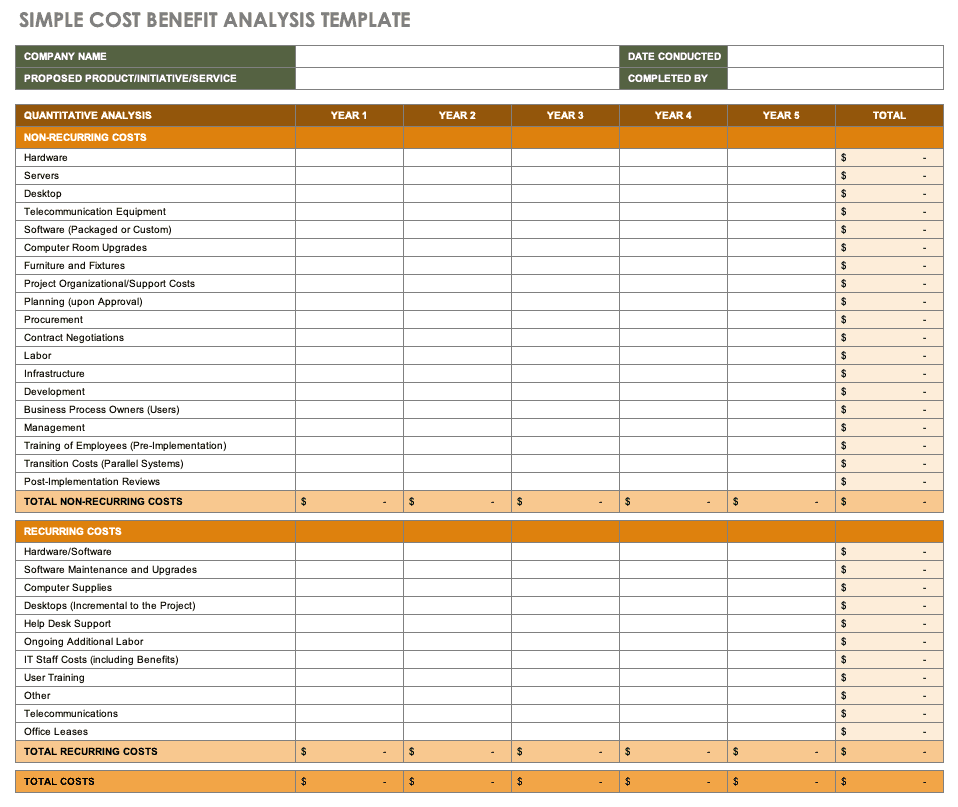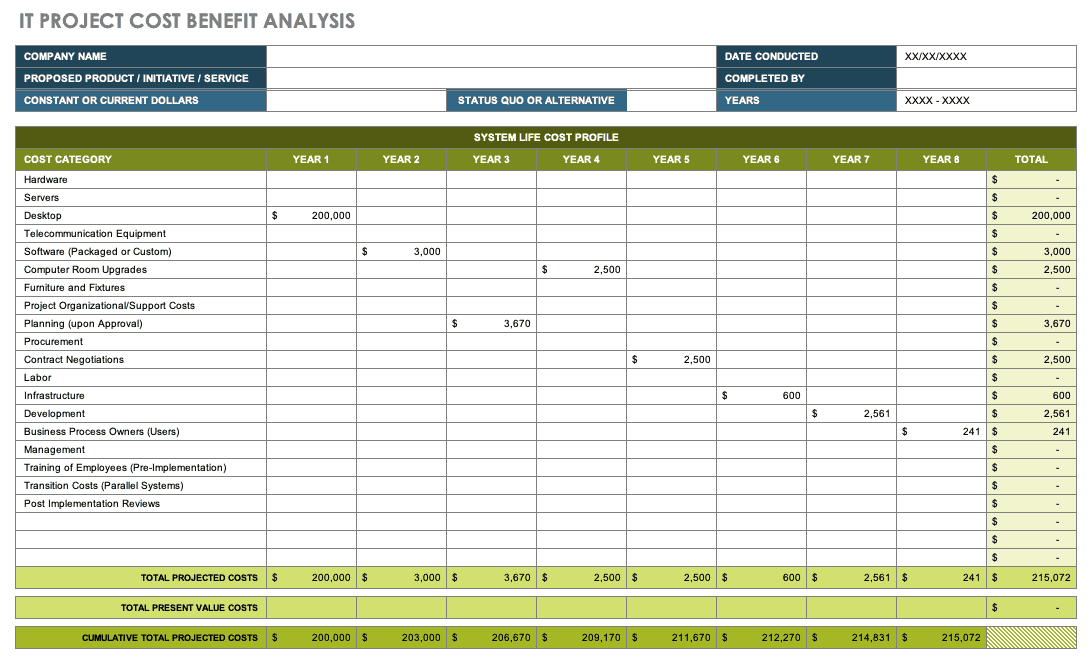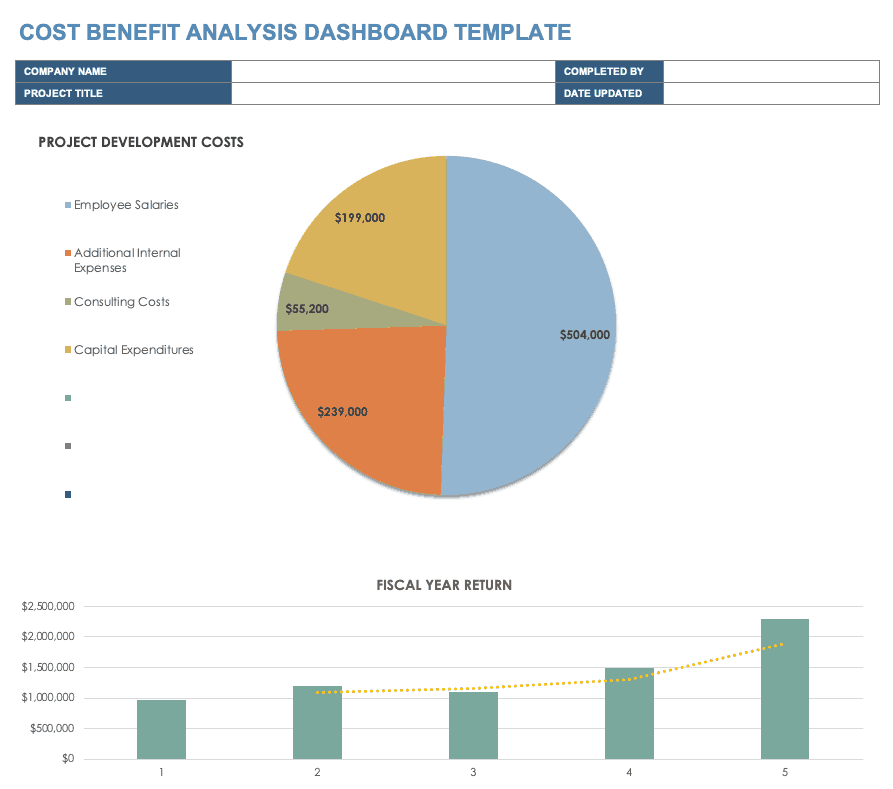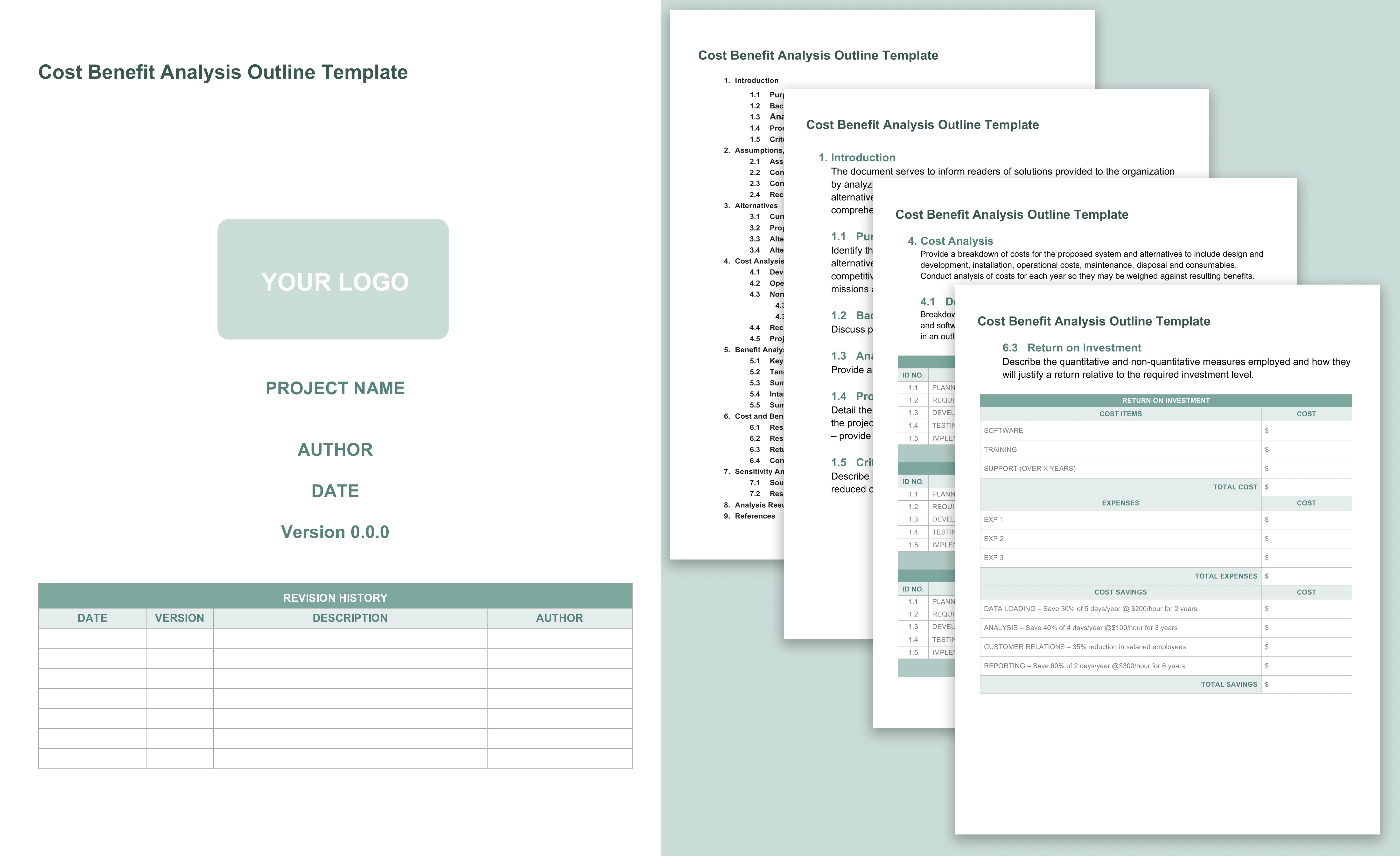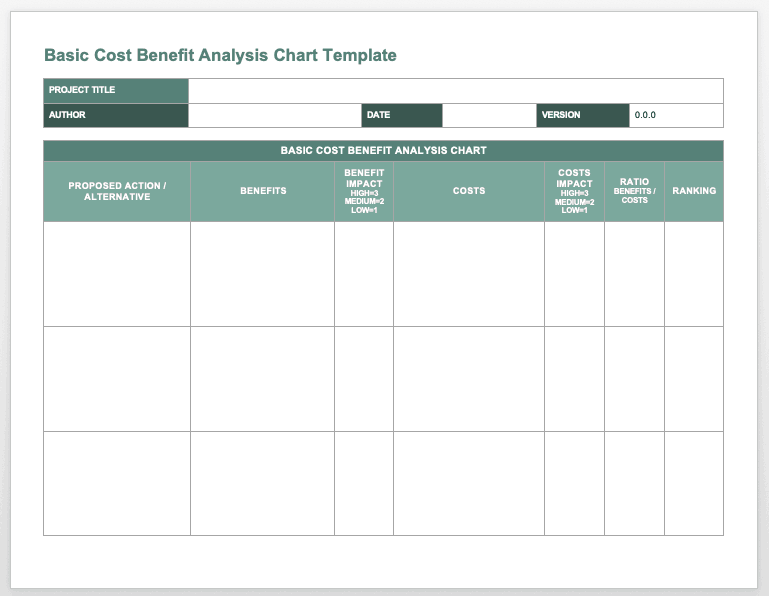Simple Cost Benefit Analysis Template for Excel
This cost benefit analysis template provides a simple spreadsheet for listing and calculating recurring and nonrecurring costs, plus revenues and other benefits. The template will calculate totals per year and over the course of five years. For a quick comparison, the second sheet in the template shows total amounts for each type of cost and benefit listed in the first sheet.
Download Simple Cost Benefit Analysis Template
IT Project Cost Benefit Analysis Template for Excel
This project cost benefit analysis template was designed with IT in mind, and includes sheets for creating comprehensive lists of costs and benefits over several years, analyzing projected cash flows, and comparing alternatives. Create a detailed cost benefit analysis that takes the entire project lifecycle into consideration to guide your decision and project-planning process. You can modify the template to suit the needs of your particular analysis.
Download IT Project Cost Benefit Analysis Template
Cost Benefit Analysis Dashboard Template for Excel
Get an easy-to-read dashboard view of your cost benefit analysis with this visual report. Data is represented in a spreadsheet format as well as graphically, which is especially useful if you’re using the cost benefit analysis as part of a presentation. You can use this template to list costs and benefits over time and help determine the net present value (NPV) of a project.
Cost Benefit Analysis Outline Template for Word
If you need a comprehensive cost benefit analysis report in Word format, this template provides a detailed outline with tables for listing figures. You can edit the outline to include information that is pertinent to your analysis, such as an introduction and description of the project or alternatives being considered, assumptions and constraints, particular costs and benefits that need to be highlighted, and recommendations based on the results of the analysis
Download Cost Benefit Analysis Outline Template
Basic Cost Benefit Analysis Chart for Word
This chart can be used to rank costs and benefits of potential actions. List actions or decisions you are considering in the first column, and then describe the costs and benefits associated with each. Assign a rank to each option based on the total costs and benefits listed, and then compare those ranks to see to what degree the benefits outweigh the costs. This is a simple way of comparing and prioritizing options.
Download Basic Cost Benefit Analysis Chart
Conducting a Cost Benefit Analysis
Depending on the length and type of project, a cost benefit analysis may also need to account for costs and revenues that occur over periods of time and take into consideration how monetary values change over time. This can be done by calculating the Net Present Value (NPV), which measures a project’s profitability by comparing the present outgoing cash flows to the present value of future cash inflows. In other words, once the monetary values for all costs and benefits for a project have been determined, a discount rate can be applied in order to convert future cash flow estimates to today’s value. Calculating NPV as part of a cost benefit analysis can help account for inflation and lost return on investment (the amount of money spent on a project that could have been invested elsewhere).
There are three primary steps involved in performing a cost benefit analysis: identifying costs, identifying benefits, and comparing both. Here’s a closer look at each stage of the process.
- Identifying Costs - Begin by brainstorming all potential costs, which may include equipment, payroll, training, travel costs, licenses, and other monetary expenses. You should also consider non-monetary costs such as those related to productivity or risks and uncertainties that could affect project outcomes or your business. Ultimately, all costs need to be assigned a monetary value in order to complete the cost benefit analysis. Your project may require one-time costs related to investment or operational expenses as well as recurring costs over the project lifecycle and beyond. All monetary values for costs occurring over time should be calculated in present value terms in order to create estimates that are as accurate as possible. You may also want to consider what the costs may be if you choose not to undertake the project or if the project fails.
- Identifying Benefits - As stated earlier, it can be hard to determine accurate revenue projections, and certain intangible benefits may not have clear monetary values, so this step can be more challenging than identifying and monetizing costs. Benefits can range from direct profits and increased production to enhanced employee satisfaction or reduced environmental impact. As with costs, the values assigned to benefits also need to be shown in present value terms for a more accurate analysis.
- Comparing Costs and Benefits - Once you have listed all the costs and benefits, you can compare the totals to see if the costs outweigh the benefits or vice versa. If the two totals are equal or very close, you may need to check your calculations, make sure no costs or benefits have been overlooked, and conduct a revised analysis. As you compare costs and benefits, consider how long it will take for the benefits to repay the costs. In addition to considering the difference between total cash flows, this timeframe may also inform your decision of whether a project is a sound investment, or not worth the time and resources.
Once you have completed your analysis, you can use the information to make a recommendation to either move forward with a project or choose an alternative, and create a plan of action that will support business objectives.
In the next section you’ll find cost benefit analysis templates in Microsoft Excel and Word formats that can be downloaded for free. These templates provide a starting point for developing your analysis and can be edited as needed. Smartsheet also offers a cost benefit analysis template with enhanced collaboration features and additional benefits, or you can create your own template to fit your needs. Find out more about Smartsheet options below.
Take Action on Your Cost Benefit Analysis with Effective Project Management in Smartsheet
Empower your people to go above and beyond with a flexible platform designed to match the needs of your team — and adapt as those needs change.
The Smartsheet platform makes it easy to plan, capture, manage, and report on work from anywhere, helping your team be more effective and get more done. Report on key metrics and get real-time visibility into work as it happens with roll-up reports, dashboards, and automated workflows built to keep your team connected and informed.
When teams have clarity into the work getting done, there’s no telling how much more they can accomplish in the same amount of time. Try Smartsheet for free, today.
